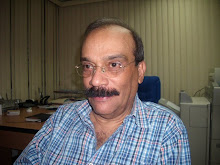The Classical Theory of Relativity by Galileo Galilee
(1564-1642) was developed thanks to the new way of thinking and analysis
created by Nicolaus Copernicus (1473-1543). Galileo was inspired by the method
of analysis of Copernicus, who against his reason, sense and logic deduced that
the earth moves around the sun and not vice versa, i.e. that the sun, moon and
the planets moves around the earth, considered in that time as the center of
the universe
The Theory of Relativity studies the motion of bodies
in space and time. The first researcher to formulate a theory on the subject
was Galileo Galilee in the seventeenth century. Then Isaac Newton (1643-1727),
in the eighteenth century made important considerations about the concepts of
space, time and movement, but it was Albert Einstein (1879-1955), in the
twentieth century, who produces a new vision of relativity.
Galileo, for the construction of his Theory of
Relativity, concluded that the motion of bodies in space is relative, because it
is seen differently depending on the position in which the observer is. Indeed,
if you are not peeking out the window of a moving airplane you do not perceive
that the aircraft is moving and, on the contrary, you feel that the aircraft is
stopped. Same goes if you stay inside a ship: in that case, you do not perceive
that the ship is moving. However, any observer from the ground or from the
shore clearly perceives the movement of the plane or boat. These different perceptions
are known as the Classical Theory of Relativity because, in effect, its
assessment is relative and depends on the place where people observe the
motion.
Well, the influence of Copernicus in thinking is so
important that became the inspiration of that other great contribution to
thinking: Classical Theory of Relativity developed by Galileo.
In the twentieth century, Einstein was also inspired
by Copernicus and Galileo to develop his Theory of Special Relativity (1905)
and his Theory of General Relativity (1915). Einstein used the same method of
thinking of Copernicus. Einstein deduced -against logic, reason and the senses-
that earth mass does not exerts attraction on objects, contradicting the Law of
Universal Gravitation (1687) created by Isaac Newton, considered until then an
irrefutable truth. In opposition to Newton, Einstein thought and showed that the
mass of celestial bodies’ curves space around it and that curvature of space is
what pushes the earth, moon and planets to the sun and what pushes objects
towards the earth. In other words, that earth does not attract the bodies and, consequently,
the Law of Universal Gravitation as it had been conceived by Newton was not
true. Einstein also showed that time is not an absolute concept as Newton had
thought, but a relative concept, i.e. that time cannot be separated from space.
Einstein, following the method of Galileo demonstrated the relativity of motion
of light in space and this allowed him to formulate his theory of the curvature
of space-time. At naked eye the light is straight, but Einstein, with his
experiments on eclipses, showed that light also curves in space.
This set of reflections have a purpose: to show that
human thought, in his great contributions to knowledge, have a consistency, a
path that is not fortuitous, aleatory, but a perfect order which cannot be
anything else than God, as their source of inspiration, because knowledge of
the great mysteries of life and the universe is only truth revealed by God.





No hay comentarios:
Publicar un comentario